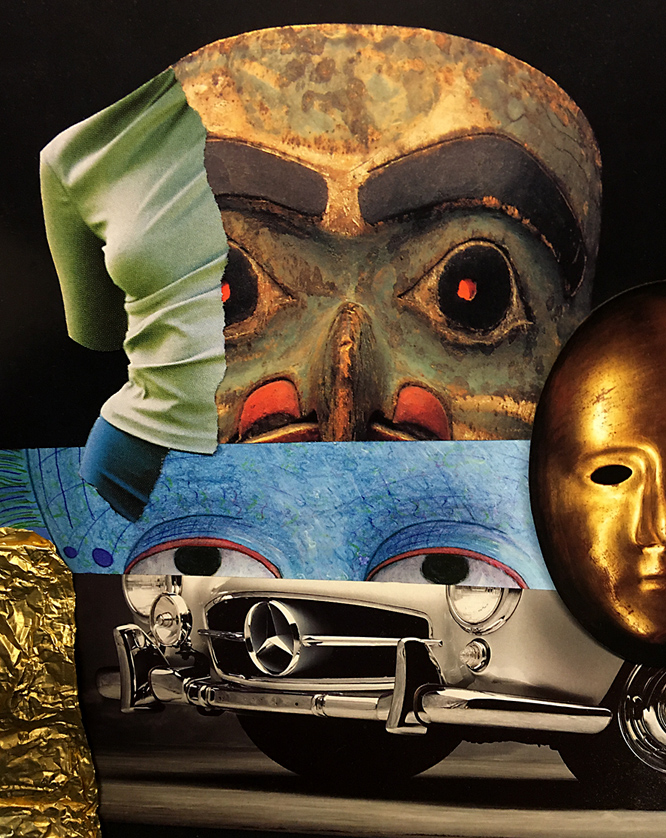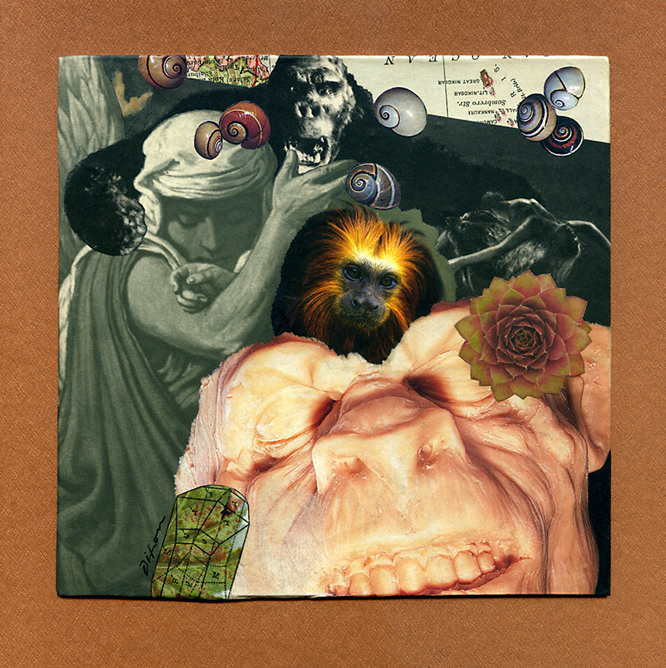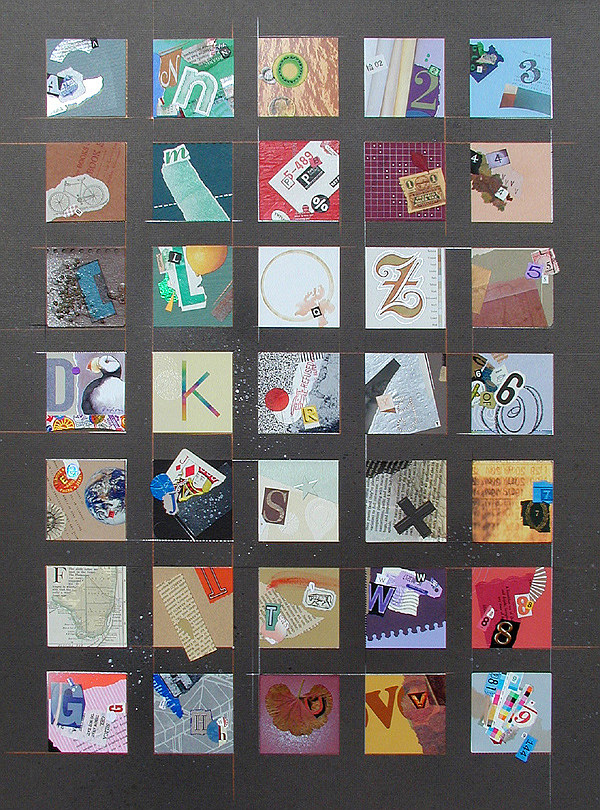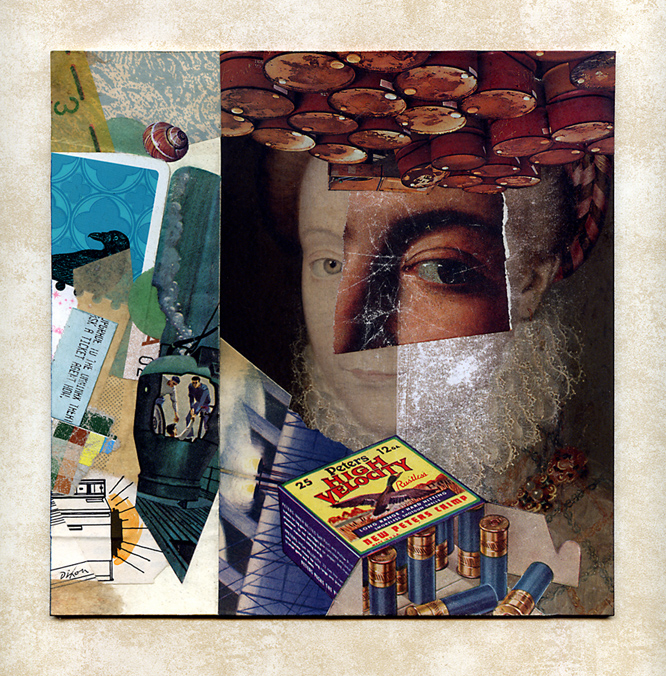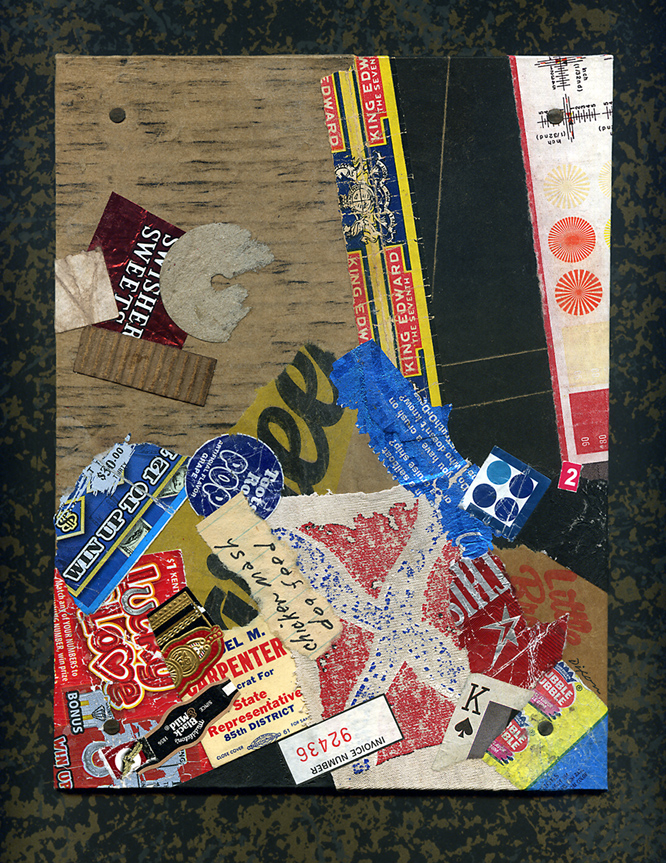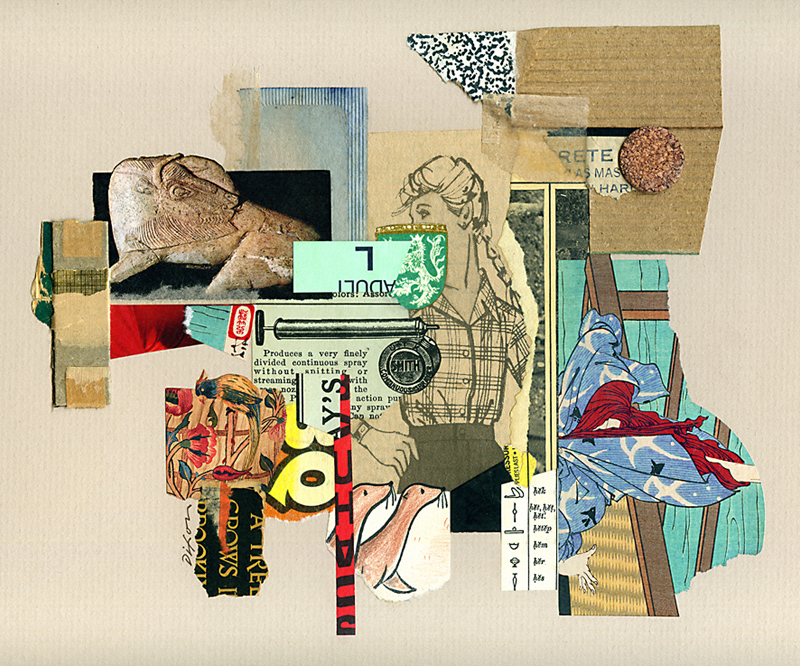Sprightly in the Morning
collage on book cover by J A Dixon
5.25 x 7 inches
private collection
Archive for the ‘Artists/Collage’ Category
Sprightly in the Morning
Friday, February 21st, 2020Convinced of Her Merit
Monday, February 17th, 2020Februllage ~ day ten
Monday, February 10th, 2020Personae
collage experiment by J A Dixon
5 x 6.25 inches
for Februllage 2020
Februllage ~ day nine
Sunday, February 9th, 2020Righteous Brutes
collage miniature by J A Dixon
6 x 5.875 inches
available for purchase
for Februllage 2020
Perspectives deserve to be reexamined
Saturday, February 8th, 2020“Don’t think of it as failure. Think of it as time-released success.”
— Robert Orben“If you’re doing it for prizes, you’re in big trouble.”
— Linda Ronstadt
Alphanumero is a large composite of 35 miniatures that I created for my first solo collage exhibition in 2007. It was acquired earlier this week by Bluegrass Care Navigators through the coordinating assistance of LexArts, the dynamic arts organization of greater Lexington, Kentucky. My sincere thanks to community arts director Nathan Zamarron for his professionalism and hard work.
Spontaneous expression within structural order had been my goal, as I created each individual “A-to-Z” and “1-to-9” composition from found material and combined mediums. I had no overall value-scale or color scheme in mind, so I didn’t see the effect of the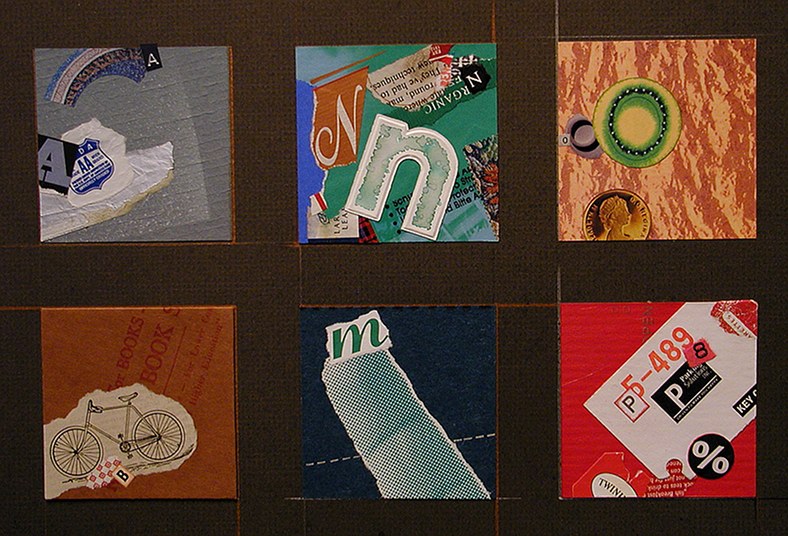 sequential, up-and-down “path” until final assembly. With a bit of hindsight, the influence of my graphic design foundation is quite obvious, and I was only beginning to devote myself to an improvisational approach.
sequential, up-and-down “path” until final assembly. With a bit of hindsight, the influence of my graphic design foundation is quite obvious, and I was only beginning to devote myself to an improvisational approach.
For a long time after that, I would focus on isolated miniatures as finished works. Alphanumero was a large and time-consuming affair, with a relatively expensive price. 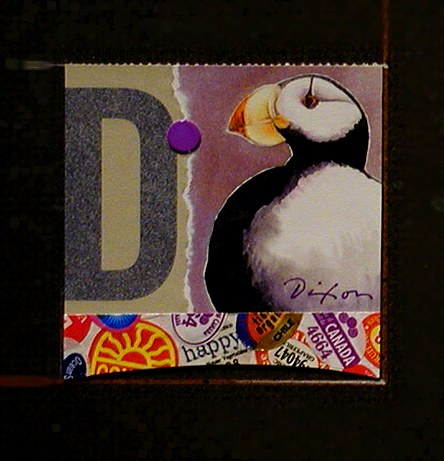 It’s no surprise that it took awhile to find a buyer. I’m pleased and gratified that it has.
It’s no surprise that it took awhile to find a buyer. I’m pleased and gratified that it has.
I’ve had many thoughts about the piece over the last dozen years, and I now question the validity of some. I haven’t created anything similar at that size since. Although there might have been a sound motive for that, my likely rationale was that the original version hadn’t sold. That is not a good basis for discontinuing an artistic investigation. Thinking that a piece has a strong chance of being purchased is an equally wrong-headed reason to make a work of fine art. Yes, the creative calling exists in a marketplace, and that consideration is always present, but shouldn’t we try mightily to strip “merchandising” from our incentive to enter the studio each day?
Easier said than done . . .
Alphanumero
composite of collage miniatures by J A Dixon
30 x 40 inches, framed
• S O L D
Februllage ~ day seven
Friday, February 7th, 2020Untitled (poem)
collage experiment by J A Dixon
5.75 x 5.75 inches
for Februllage 2020
Februllage returns . . .
Monday, February 3rd, 2020“Find out what you want to do and spend the rest of your life getting better at it.”
— Jeff Daniels
Februllage, the month-long, international collage-a-day initiative playing out for a second year in a row, has been thought provoking for me on multiple levels. The remarkable worldwide participation indicates how extensive the mobile-device-connected community of collage makers has become — and to what degree that phenomenon has been driven by social-media platforms like Instagram. There is every indication that the 2020 version will be even bigger than what took place a year ago.
It wasn’t that long ago (at about the time I made my first entry here at TCM) when nothing resembling what is occurring had taken place. Collage collectives certainly existed, and many interactive collaborations were under way, but the rapid penetration and sheer scale of Februllage was unknown, at least to this observer. 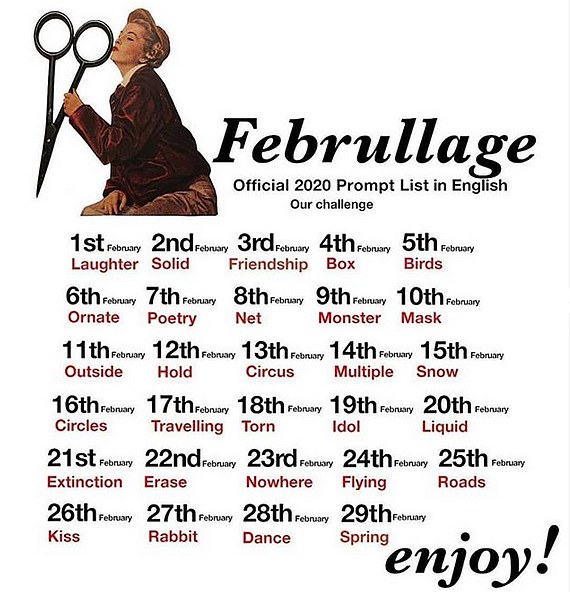 With no physical artifacts involved, such as mail art, altered books, or other “analog” joint ventures, this is a purely virtual activity, with no distinction being made between digital, conventional, or hybrid collage techniques.
With no physical artifacts involved, such as mail art, altered books, or other “analog” joint ventures, this is a purely virtual activity, with no distinction being made between digital, conventional, or hybrid collage techniques.
I must admit to you all that there have been moments when I’ve questioned whether or not the exercise is a gimmicky distraction, with participants chasing after approval and exposure. But my perspective shifts, and then I marvel at how unprecedented it is, at the magnitude of the cross-pollination, at the obvious artistic excitement being generated. It defines a new kind of 21st-century classroom studio, where everyone is looking at what others are doing at the surrounding drawing boards, and earnestly working to bring “A-Game” execution to the collective project. And, like an academic critique, the opinions of the self-appointed people at the front of the room can seem arbitrary at times, when they choose whom to highlight and whom to ignore. But let’s face it — that’s the way it’s always been in the art world, and it’s not realistic to think anything will change in the emerging age of social networks. A natural competitiveness is at the heart of any human activity, even when we come together in a spirit of shared purpose, personal growth, and trans-cultural camaraderie. And the most worthwhile and rewarding competition is the ongoing one we have with ourselves, as each of us makes a daily effort to be a better collage artist than we were last week, last month, or last year.
Here’s to all the strivers!
Confound Thy Stubborn Face
collage miniature by J A Dixon
7 x 7 inches
(prompt = ‘box’ and ‘birds’)
available for purchase
Good Ol’ Boy Dada
Monday, January 27th, 2020“When Schwitters made the first collage by literally picking up a piece of rubbish, a sweet wrapper, a bus ticket and a piece of wood, that was pure invention.”
— Sir Peter Blake
For the many who revere his art, there’s a distinct Kurt Schwitters for each of us — rebellious creator, fearless performer, relentless out-of-the-boxer, proto-beatnik, or visionary theorist. In combination with his towering individualism, he was, by reports from those who knew him, affable, witty, optimistic, entertaining, and a practical joker. This is the Kurt who would be a pleasure to “hang” with, who others in the internment camp on the Isle of Man would hear each morning, barking like a dog. 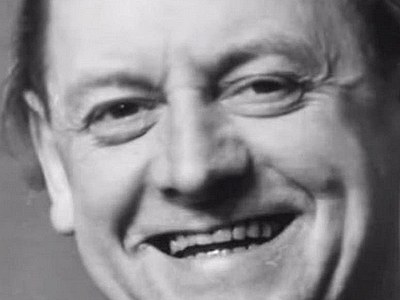 In our local Bluegrass culture, there is a phrase for such a character. Around these parts, he likely would’ve been known as a “good ol’ boy.”
In our local Bluegrass culture, there is a phrase for such a character. Around these parts, he likely would’ve been known as a “good ol’ boy.”
In response to the international call by Ric Kasini Kadour to build a Schwitters’ Army collection at MERZ Gallery, the two pieces I created pay tribute to this particular K.S. Both were fashioned from street debris and highway litter accumulated from my immediate vicinity. One of them was mailed to Sanquhar, Scotland. I haven’t decided what to do with “part 2.” Perhaps the series will continue.
In 2016, I wrote the following in my published essay on a hundred years of Dada: “Those of us who create collage art may not always describe our works as a tribute to the enduring, inclusive concepts of Merz, but that is precisely what they are, and we are indebted to that legacy.” As one who has never wearies of exploring the far-reaching innovations of K.S., I am content to describe myself unabashedly as a working “Merzologist.”
Schwitters may or may not have been the original artist to embed found detritus in collage, but certainly he was the first to fully master a modern-art version of the medium when it emerged at the close of the Great War. Embracing every conceivable source ingredient, he would codify the new visual vocabulary, give it an umbrella name, and bequeath the methodology to unborn generations. 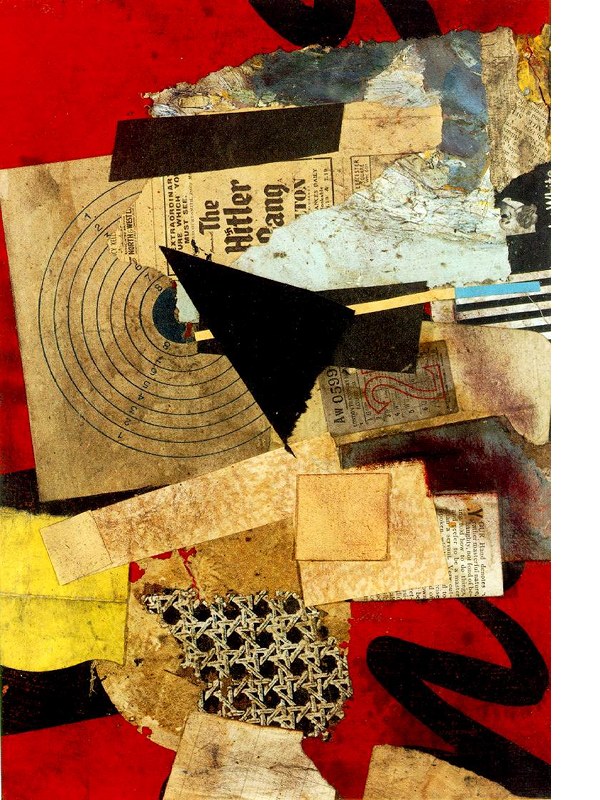 He may have sensed that the window of opportunity for him to preside over such a grand human venture was closing. He never got to take by storm the art world of 1950s New York — something eminently suited to his personality. His work and writings have had to speak for themselves.
He may have sensed that the window of opportunity for him to preside over such a grand human venture was closing. He never got to take by storm the art world of 1950s New York — something eminently suited to his personality. His work and writings have had to speak for themselves.
For me, the seminal creations that launched what we know as Merz can never be separated from the man himself — the one who directed subtle, irreverent jabs toward a gang of thugs who hijacked his culture, until it was impossible to stay put, and then, after facing further persecution in Norway with his son, reckoned that an icebreaker just might evade Nazi torpedoes long enough for them to reach the coast of Scotland. Probably that dauntless, wry, “Good Ol’ Boy” side of him was satisfied to leave us with this simple thumbnail declaration:
“My name is Kurt Schwitters.
I am an artist and I nail my pictures together.”
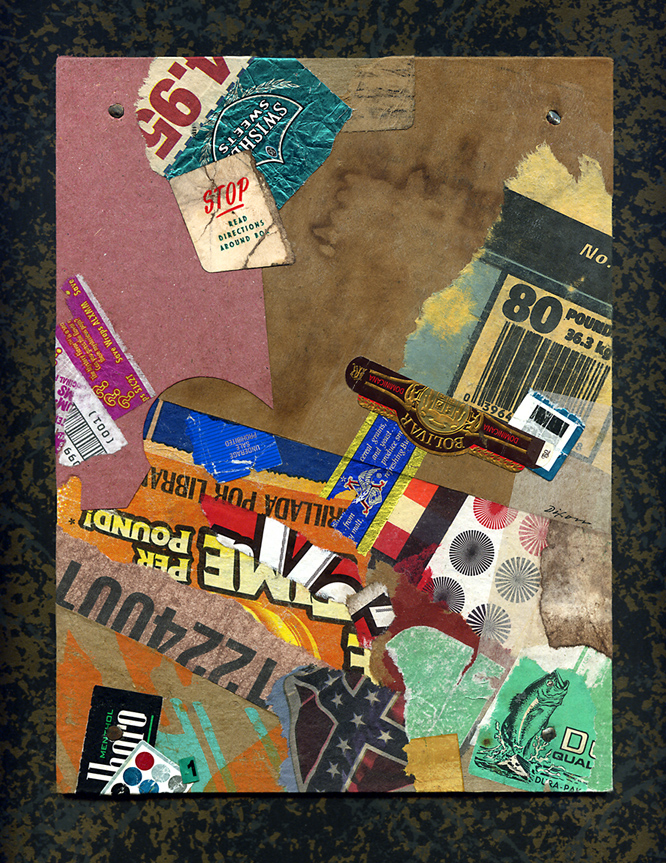
Good Ol’ Boy Dada, part 1
collage artifact by J A Dixon
7 x 9.25 inches
Good Ol’ Boy Dada, part 2
collage artifact by J A Dixon
7 x 9.25 inches
Schwitters’ Army Mobilized in Rural Scotland
Monday, January 20th, 2020“. . .this is what we do in the collage community: we engage, we exchange, we manifest with one another. We emerge into a new state of being together. That is what makes art powerful. It connects us and takes us into the future.”
— Ric Kasini Kadour
Any collage artist who maintains even a casual curiosity about the legacy of Kurt Schwitters has to be enthusiastic about developments in Sanquhar. As someone who employs this space to exalt the “Master of Merz” without apology, I now feel compelled to praise Ric Kasini Kadour and his worldwide call to built a Schwitters’ Army collection of collage artwork at the center for learning established by David Rushton in the Scots town. Needless to say to an audience that visits this site with an interest in all things collage, Ric has made an impressive effort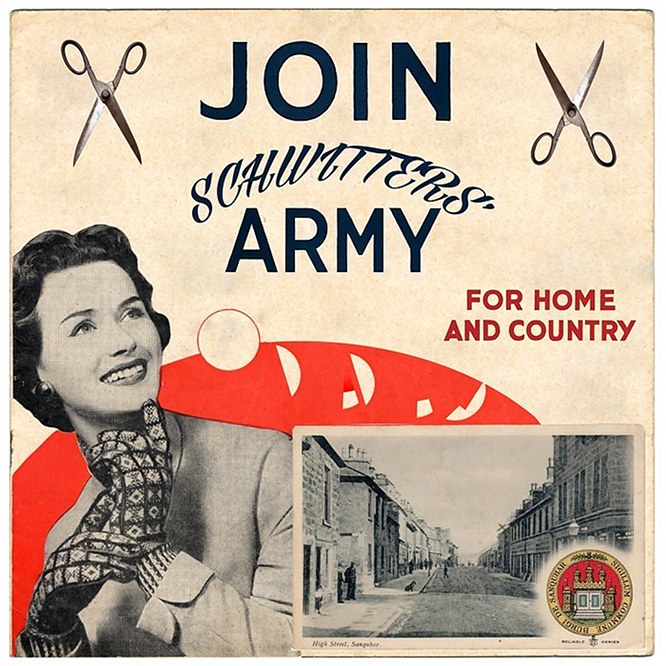 over the past few years to raise the level of discourse about a medium to which so many of us have dedicated ourselves. From Kolaj Magazine to Kolaj Institute to Kolaj Fest, he’s been making his mark for some time and clearly doesn’t intend to rest on his laurels.
over the past few years to raise the level of discourse about a medium to which so many of us have dedicated ourselves. From Kolaj Magazine to Kolaj Institute to Kolaj Fest, he’s been making his mark for some time and clearly doesn’t intend to rest on his laurels.
As part of his curatorial efforts at MERZ Gallery, he has asked contributing collage artists to answer a few questions. As I prepare to ship my donation to the cause, I’ll publish my supporting remarks here for your potential interest.
Next time: a look at the artwork and my thoughts about the context of its creation.
What is your origin story? When did you first start making collage seriously?
The first collage art that I remember creating was in the 4th or 5th grade, probably in 1961 or 1962, when I used sample chips of color from a paint store to cut and paste a mosaic-like image that won the “Poppy Day” poster contest. It’s always stood out in my memory. I thought of myself as an artist from that point forward. Nevertheless, up into high school, I would feel the lack of any competent art instruction as a keen deprivation. I convinced my parents in 1967 to enroll me as a charter student in the home-study course co-founded by Norman Rockwell called “The Famous Artists Course for Talented Young People.” Unlike the successful version for adults on which it was patterned, the package of guided assignments for teens would fail in the marketplace, but not before exposing me to a diversity of fine and applied art mediums, including collage.
Who was the first collage artist you connected with?
The Famous Artists Course would bring to my awareness many influences in the area of collage and assemblage, including Fred Otnes, Robert Rauschenberg, Louise Nevelson, Joseph Cornell, and Kurt Schwitters. Although I didn’t understand his technical methods, I initially attached my affection to the visually comprehensible Otnes, and I’d emulate his montage approach throughout my years as a professional illustrator and designer. In contrast, a series of breakthroughs in my journey to unravel the Merz of Schwitters would take another forty years, culminating in my first solo exhibition as a collage artist in 2007.
How do you connect with the collage community?
I began writing about collage and showcasing my practice at “The Collage Miniaturist” in 2012. Since then, beginning with fellow artists in Kentucky who work in the medium, I’ve collaborated with a body of dedicated collage artists. I’ve also regularly entered pieces in national and international calls for collage and submitted my work to landmark exhibitions and permanent collections. Believing that cross-pollination in collage through worldwide virtual communities is a vital force in the so-called “Post-Centennial” collage movement, I follow hundreds of active collage artists through social networks. As much as possible for someone who continues to sustain an ongoing studio and exhibition schedule, I regularly comment on trending topics and answer questions in the digital realm.
Knicknackery
Monday, January 13th, 2020Knicknackery
collage artwork by J A Dixon
10 x 9 inches
Purchase this artwork.



